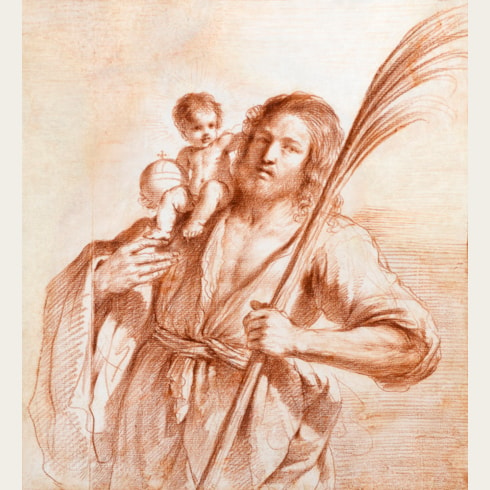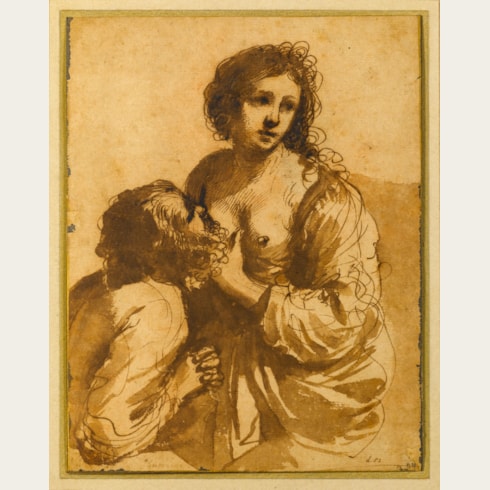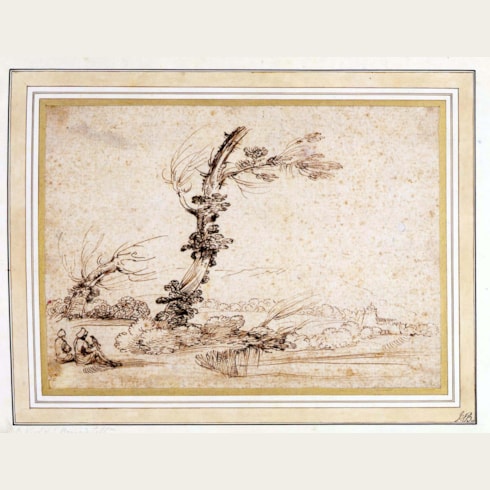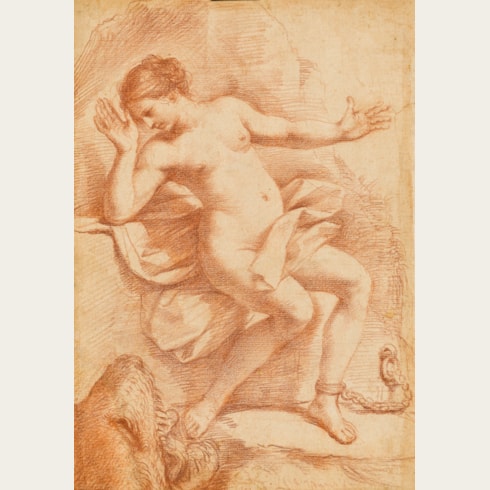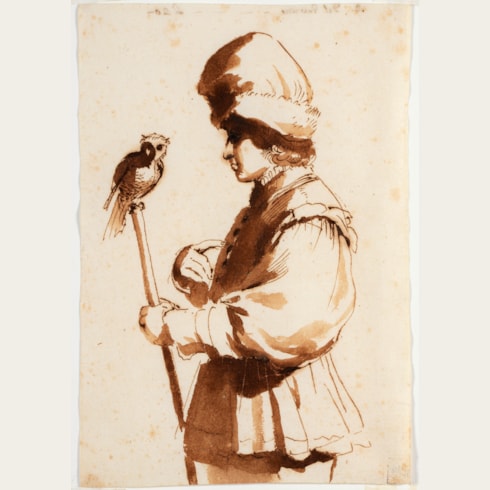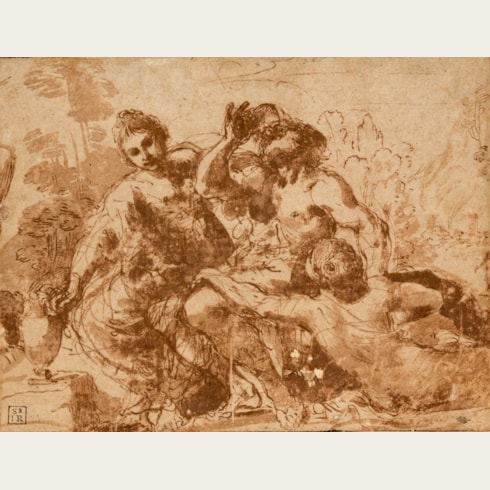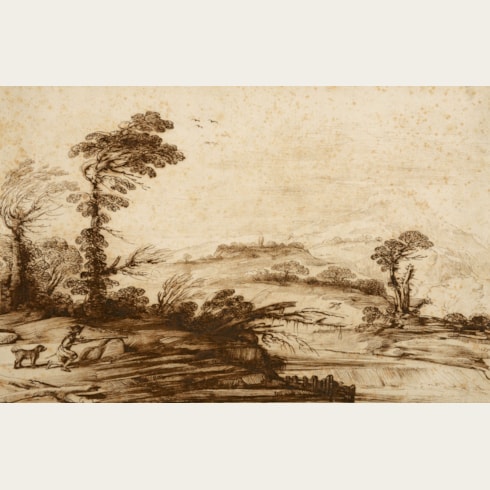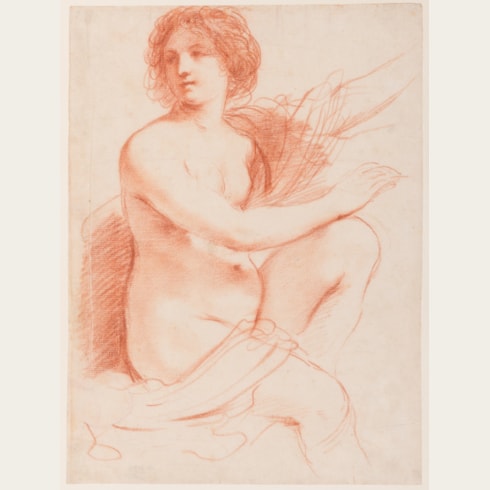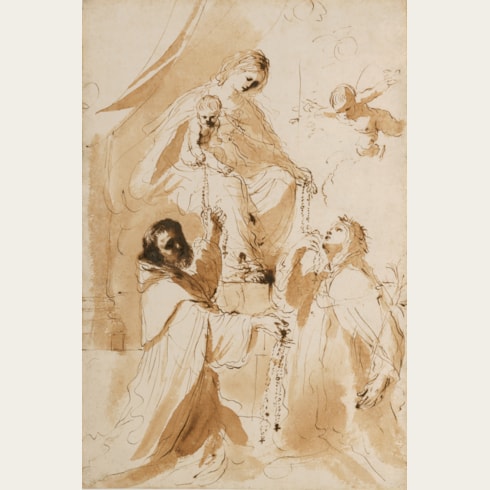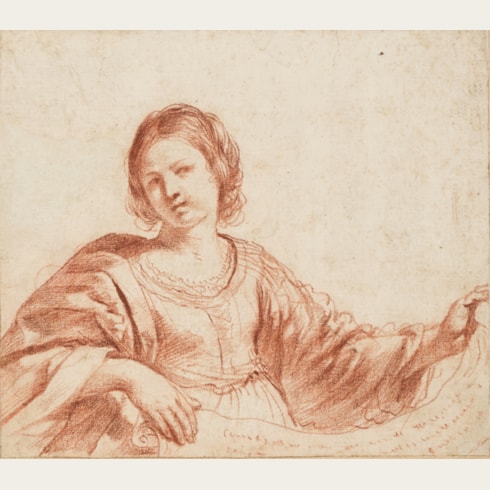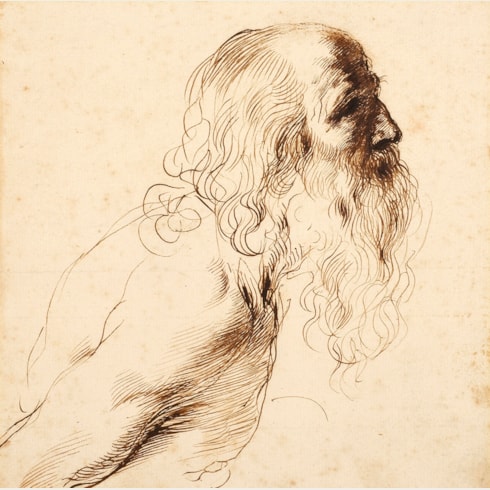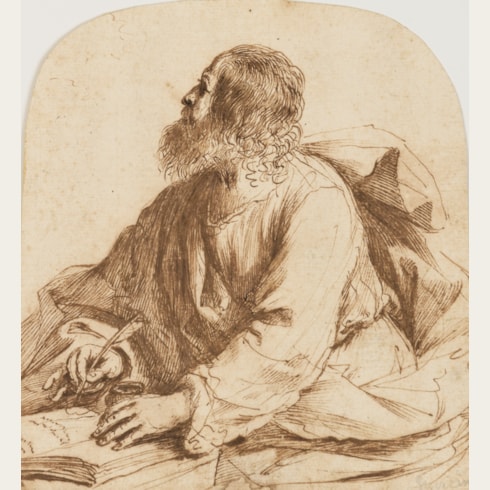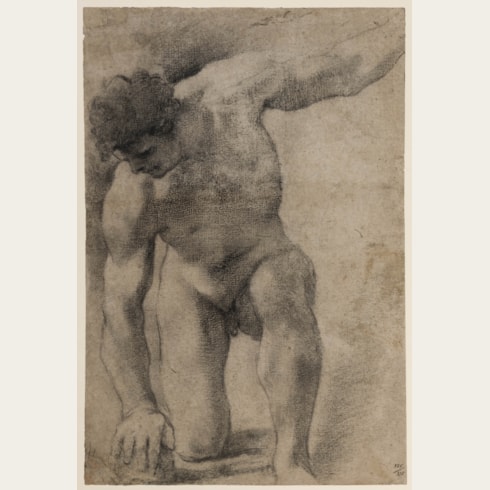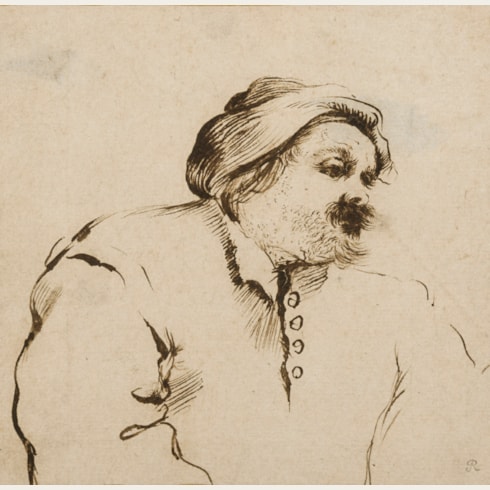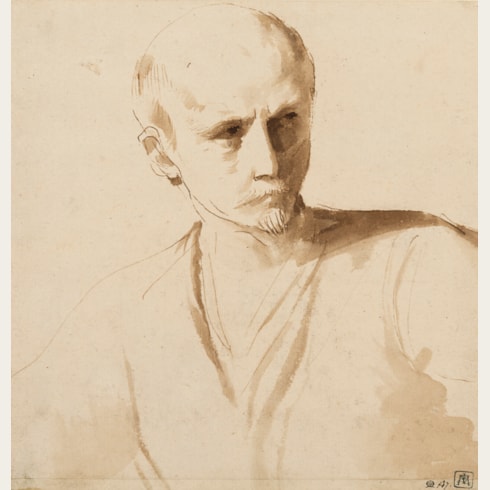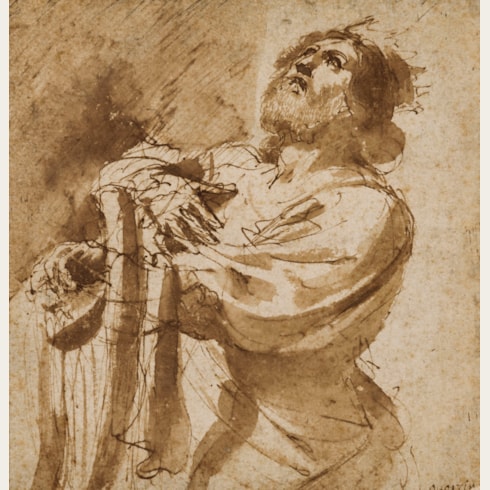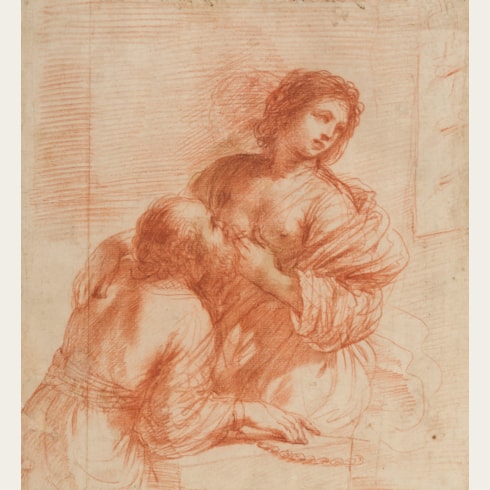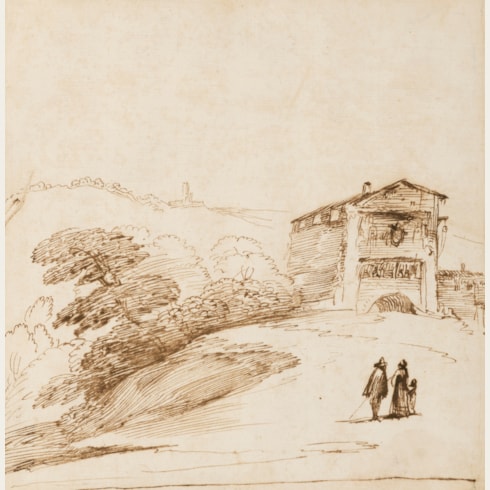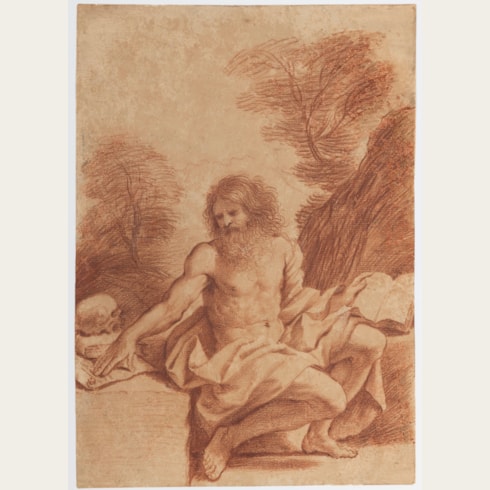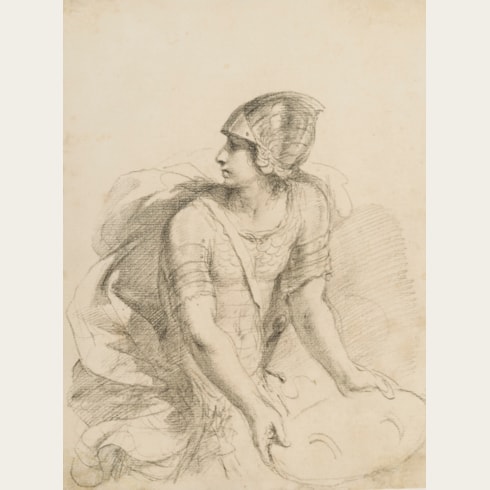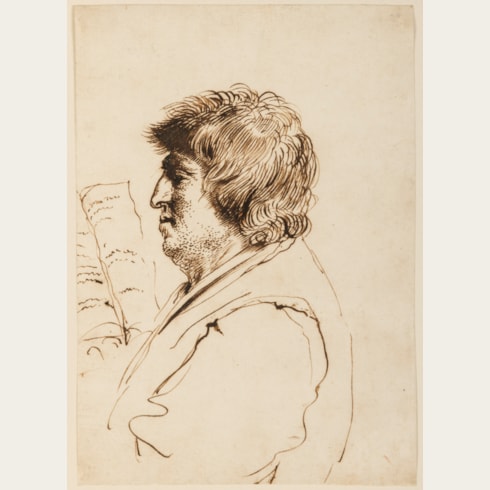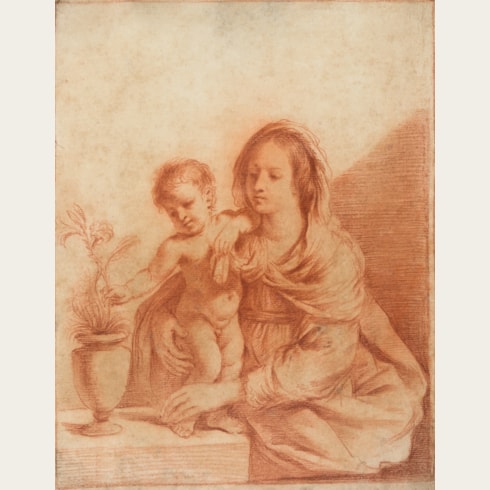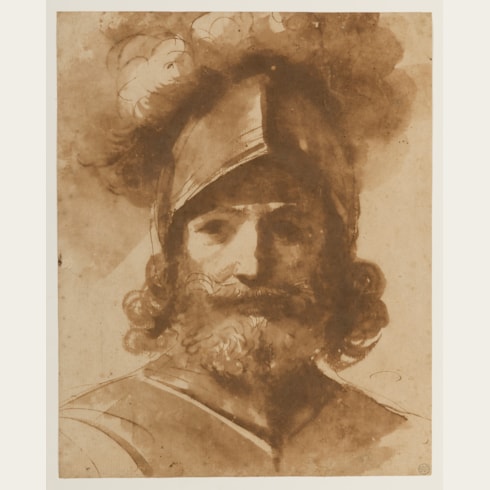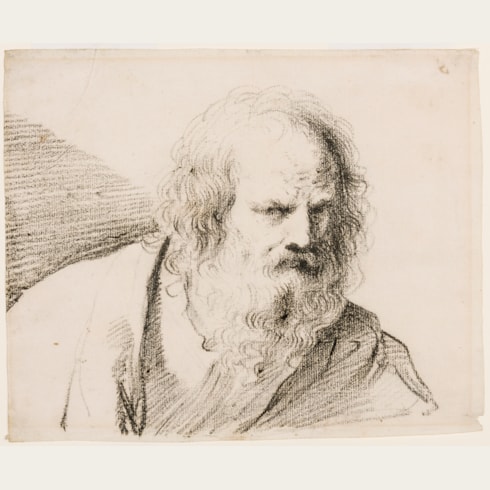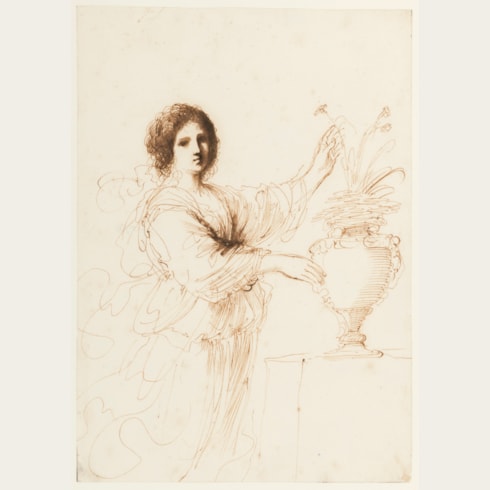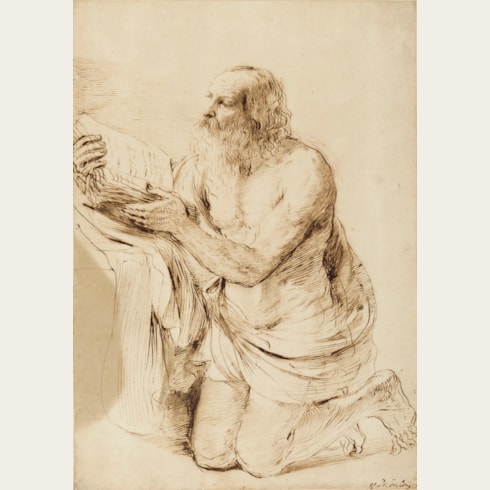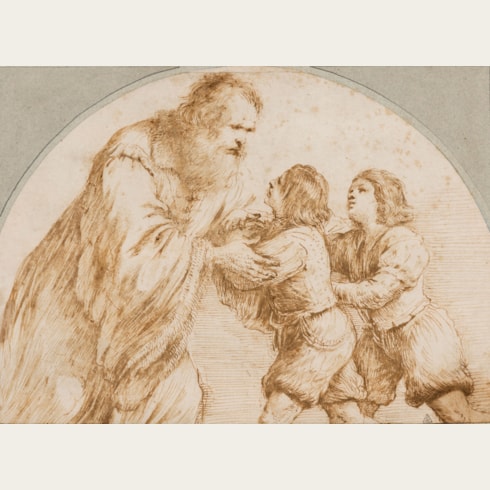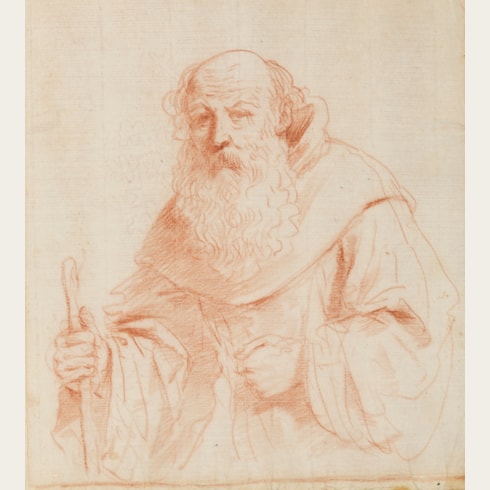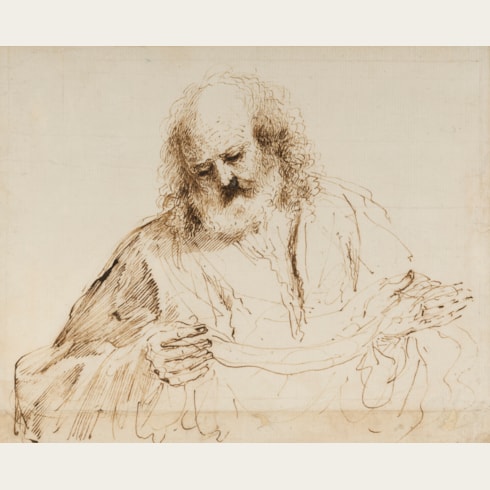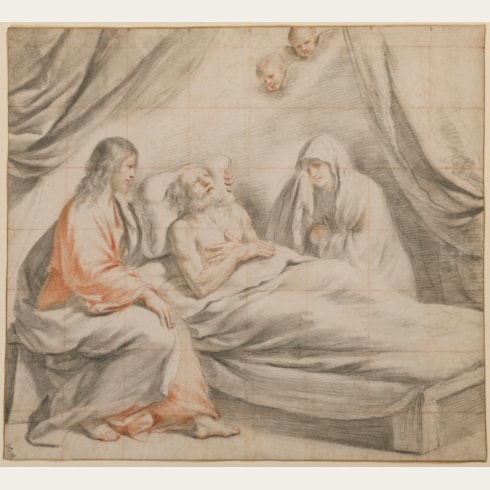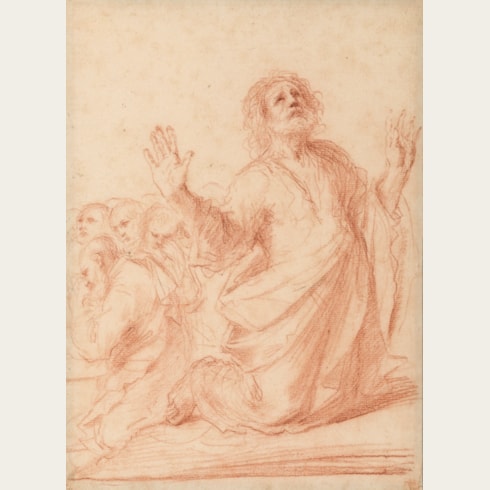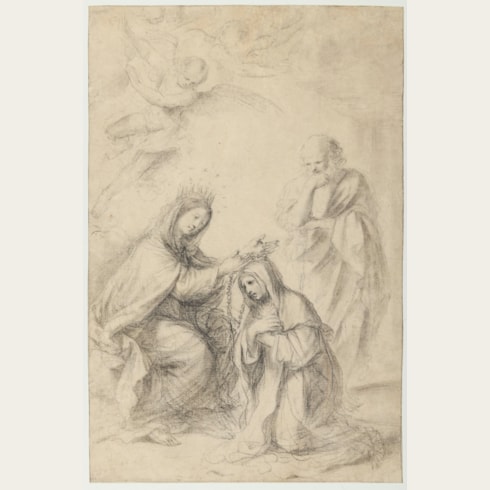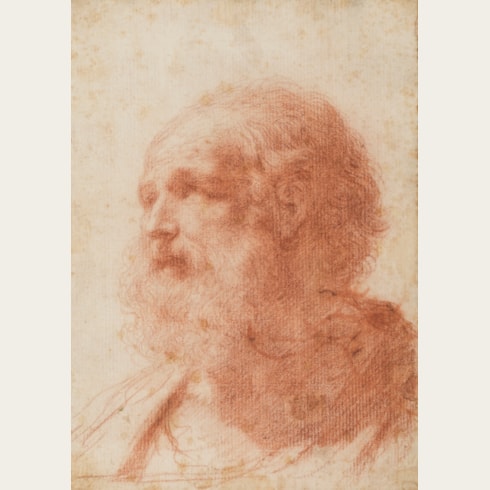Giovanni Francesco Barbieri GUERCINO
(Cento 1591 - Bologna 1666)
The Head of a Cleric
Inscribed Rembrandt in the lower right margin of the 19th century mount.
140 x 121 mm. (5 1/2 x 4 3/4 in.)
Often sympathetic, Guercino’s genre drawings were not generally intended as studies for paintings but were produced rather as visual exercises and for his own pleasure. As one scholar has written, ‘For [Guercino], genre drawings were worth executing for their own sake and for their entertainment value. One cannot help but notice the sincere humanity and ‘down-home’ flavor of many of Guercino’s sketches....it is easy to understand why the artist left Rome in 1623 and returned to a ‘piccolo paese’ to continue his career. He seems genuinely to have enjoyed the provincial community where he grew up and learned to paint.’ As Julian Brooks has further noted, ‘Given that Guercino travelled little and spent so much of his career in provincial Cento, it is no surprise that his caricatures and genre scenes reflect local life rather than political subjects. A gentle, sensitive humor and humanity characterize his work in this field and indeed pervade his entire graphic output.’
David Stone has suggested that the present sheet may be approximately dated to sometime between the late 1630s and the mid-1640s. Probably drawn from life, this drawing is typical of Guercino’s character studies and his interest in physiognomy. The emphasis here is on the man’s hair and face, with the application of numerous small dots of ink to capture the subject’s unshaven appearance. Although Guercino’s use of a stipple and line technique was first developed in drawings intended to be engraved by his associate, the printmaker Giovanni Battista Pasqualini, the artist continued to work in this so-called ‘gravure’ style in drawings of the late 1630s and 1640s, such as the present sheet, that are unconnected with prints.
Among stylistically comparable drawings is a study of Cato of Utica Saying Farewell to his Son, formerly in the collection of Sir Denis Mahon and now in the Ashmolean Museum in Oxford, which is a study for a painting of the subject of 1637, today in the Musée des Beaux-Arts in Marseille. Indeed, the physiognomy of the man in this drawing is close to that of one of the onlookers at the extreme right edge of the Marseille painting.
Also comparable to the present sheet are two pen drawings - a Head of a Girl Wearing a Hat and a Necklace and A Franciscan Saint Looking Up - in the Blanton Museum of Art at the University of Texas in Austin, as well as a drawing of the head of a woman in the Goldman collection in Chicago, which has been regarded as a study for a now-lost painting of The Offering of Abigail of 1636.
Giovanni Francesco Barbieri, known as Il Guercino (‘the squinter’) because he was cross-eyed, was by the second decade of the 17th century one of the leading painters in the province of Emilia. Born in Cento, a small town between Bologna and Ferrara, Guercino was largely self-taught, although his early work was strongly influenced by the paintings of Ludovico Carracci. In 1617 he was summoned to Bologna by Alessandro Ludovisi, the Cardinal Archbishop of Bologna, and there painted a number of important altarpieces, typified by the Saint William Receiving the Monastic Habit, painted in 1620 and now in the Pinacoteca Nazionale in Bologna. When Ludovisi was elected Pope Gregory XV in 1621, Guercino was summoned to Rome to work for the pontiff and his nephew, Cardinal Ludovico Ludovisi. It was in Rome that Guercino painted some of his most celebrated works, notably the ceiling fresco of Aurora in the Casino Ludovisi and the large altarpiece of The Burial and Reception into Heaven of Saint Petronilla for an altar in Saint Peter’s. The papacy of Gregory XV was short-lived, however, and on the death of the Pope in 1623 Guercino returned to his native Cento. He remained working in Cento for twenty years, though he continued to receive commissions from patrons throughout Italy and beyond, and turned down offers of employment at the royal courts in London and Paris. Following the death of Guido Reni in 1642, Guercino moved his studio to Bologna, where he received commissions for religious pictures of the sort that Reni had specialized in, and soon inherited his position as the leading painter in the city.
Guercino was among the most prolific draughtsmen of the 17th century in Italy, and his preferred medium was pen and brown ink, although he also worked in red chalk, black chalk, and charcoal. He appears to have assiduously kept his drawings throughout his long career, and to have only parted with a few of them. Indeed, more drawings by him survive today than by any other Italian artist of the period. On his death in 1666 all of the numerous surviving sheets in his studio passed to his nephews and heirs, the painters Benedetto and Cesare Gennari, known as the ‘Casa Gennari’.
The drawings of Guercino, which include figural and compositional studies, landscapes, caricatures and genre scenes, have always been coveted by later collectors and connoisseurs. Indeed, the 18th century amateur Pierre-Jean Mariette noted of the artist that ‘Ce peintre a outre cela une plume tout-à-faite séduisante’. The largest extant group of drawings by Guercino is today in the Royal Collection at Windsor Castle; these were acquired from the Gennari family by King George III’s librarian, Richard Dalton, between about 1758 and 1764.
Provenance
Private collection
Anonymous sale (‘Redécouverte d’une collection aristocratique inédite constituée à la fin du XIXe siècle’), Paris, Hôtel Drouot, 28-29 March 2023, lot 286
Private collection, London.








